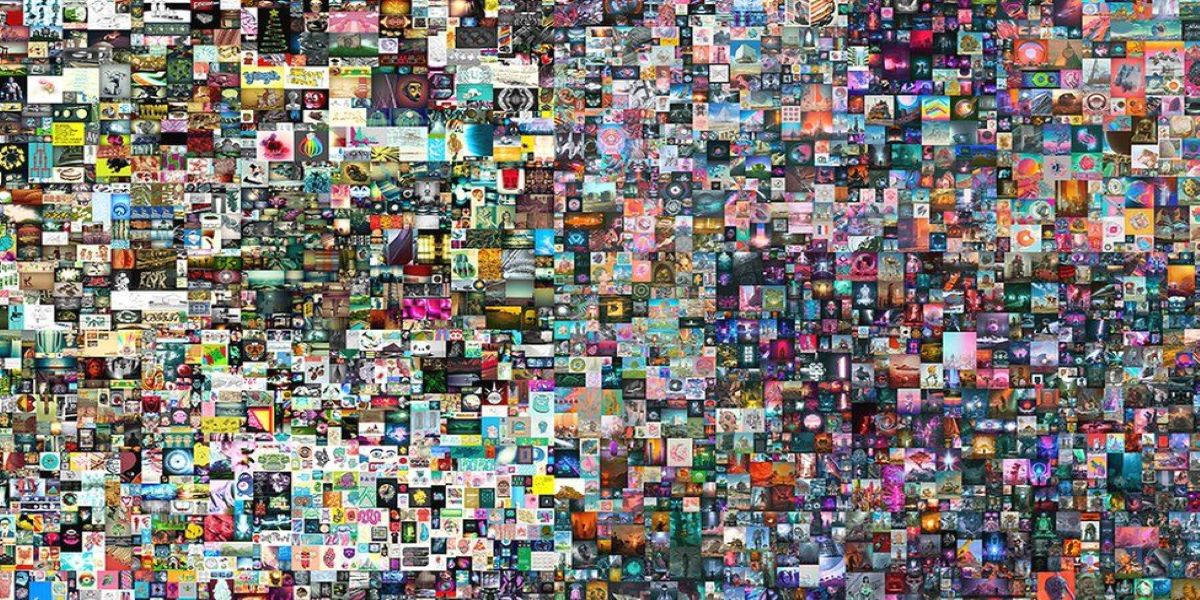The latest development in the cryptocurrency world has hit the headlines recently. You probably saw the story about the £50m cryptocurrency sale of Beeple’s ‘Everydays: The First 5000 Days’ – a digital art NFT at Christie’s Auction House.
But what actually is an NFT? How are they being used? What are the pitfalls?
Here’s a brief explanation of what they are and how they work.
What does NFT stand for?
NFT stands for non-fungible token.
What on earth does ‘fungible’ mean?
Despite its appearance to the contrary, this has nothing to do with fungi!
‘Fungible’ is an economic term that means an asset that’s comprised of units that are interchangeable with other assets. It’s not just connected with cryptocurrency and digital assets.
A familiar example makes it much clearer. Money – you can exchange one £20 note for two £10 notes and still have something that’s the same value. So money is fungible. It’s the same with different currencies, you can exchange sterling for dollars of the same value according to the exchange rate at the time.
Now we know what ‘fungible’ means, we can work out that ‘non fungible’ is it’s opposite. If an asset is non fungible, it’s an original thing that can’t be interchanged with something else. Like a work of art, piece of music or building. It can be bought and sold, but not interchanged because it is unique.
So what’s a non-fungible token?
In the digital world a non-fungible token (NFT) is a one-of-a-kind asset, in the form of a digital token. They don’t have any actual physical form of their own. As in, an NFT artwork is like a certificate of ownership for the digital file of that artwork – not an actual piece of physical art you can hang in your home.
Virtual ownership. The artist may still hold copyright over the original. And the asset itself can be reproduced exponentially.
NFTs can be bought and sold using cryptocurrency on any of the assorted online auction sites. Just like cryptocurrency, NFTs are recorded in the blockchain. A ledger that’s kept by thousands of computers across the globe. This means that authentication is never in question because the whole history of the NFT is recorded alongside the current owner. This also means that they cannot be forged.
How do you create an NFT?
You need to use one of the many auction market websites. After creating an account, you upload your digital piece and the website generates a copy of that file on the digital ledge are as NFT.
This can then be bought and resold using cryptocurrency.
Artist: The artist uploading their work can retain the copyright and create multiple NFTs of the same work. It’s also possible to write in clauses to your NFTs to guarantee you a percentage of all future sales.
Buyer: It’s important to know that buying an NFT doesn’t mean that you’re in possession of the ‘original’ uploaded data file. You’re also not buying exclusive ownership of the work.
Are there any issues with NFTs?
Copyright Infringement
In terms of copyright – several issues have already come up in the trade of NFTs. There is no onus on the auction market sites to check that the person uploading the digital file is the original creator. Essentially, you can upload anyone’s work as an NFT without permission. An obvious problem to add to creators already difficult relationship with online theft of their work.
Ecological cost
There is an environmental cost to this new development. Memo Akten is a Turkish digital artist who also has a PhD in Artificial Intelligence. He has become a prominent voice against the rapid growth of NFTs.
In an article published on Medium, he shows equivalent power usage to just “using the PoW Ethereum blockchain to keep track of sales and activity”. In other words, creating and distributing NFTs.
Using his calculations, he concludes that: “In under half a year, one artist’s multi-edition NFTs have a footprint of 260 MWh, 160 tonnes of CO2 emissions.”
Amongst other examples, he says this is equivalent to:
- “Boiling a kettle 3.5 million times
- An EU resident’s power usage over 77 years
- Flying 1.5 thousand hours”
That’s a lot of CO2 emissions. The amount of power needed to create NFTs remains a bone of contention.
UK Tax and NFTs
HMRC produced guidance on the UK tax implications of buying cryptoassets and selling them. Because HMRC define cryptocurrency, like Bitcoin and Ethereum, as cryptoassets (not the same as monetary currency), this involves capital gains tax and self assessment declarations. They haven’t currently published specific guidance around NFTs, which are different by definition, but refer to this existing guidance.


